
Over 94,000 domestic tourists have stayed in the province during the mentioned time, Jalil Jabari said on Thursday. In nine months, over 16,000 foreign travelers stayed in the province’s accommodation centers and it is estimated that 5,500 foreign tourists will stay in these units in the fourth quarter of the year, the official added. The accommodation centers have generated over 40 job opportunities during the mentioned time as well, he noted. Back in December, Jamshid Hamzehzadeh the head of the Iranian Hoteliers Association announced that following the planned measures, the occupancy rate of the country’s hotels, which had fallen below five percent because of the outbreak of the coronavirus, has reached 45 percent over the past three months. Multiple problems, notably the pandemic, caused a severe impact on the tourism industry, the official explained. Even before the coronavirus outbreak and in 2019, travel was reduced due to heavy rains and flooding across the country, and the hotel industry had to recoup nearly 100 percent of the costs paid for canceled hotel reservations, he added. The Iranian hoteliers have lost 220 trillion rials (about $740 million) over the past two years, he noted. However, some problems have been resolved and the hotels’ condition has improved, he mentioned. Back in October, the official announced that Iranian hotels are ready to receive foreign tourists as the issuance of tourist visas and the flow of foreign tourists from land and air borders would be resumed. Ninety percent of the hotel staff have been vaccinated against the coronavirus, so the hotels are ready to welcome foreign tourists, observing strict health protocols, he said. The main destinations of foreign tourists in Iran are specifically cities such as Mashhad, Qom, Tabriz, Shiraz, Yazd, and Isfahan, and to return to the figure of over eight million incoming tourists before the outbreak of the coronavirus, serious planning is required, the official added. Iraqi tourists will flood the country once the borders open, but attracting tourists from Europe will require some time, he noted. However, he noted that two-thirds of the hotel staff have lost their jobs, he added. Back in September, Hamzehzadeh announced that all employees of accommodation centers across Iran are scheduled to be vaccinated against the coronavirus. “To vaccinate staffs of all accommodation centers, including eco-lodges, apartment hotels, and guest houses, as well as hotels, more coordination with the Ministry of Health is needed,” he added.
Create: Jan 15, 2022 Edit: Jan 15, 2022
Arabian, who is a master of metalwork and Minakari (enamel), participated in the event with one of her exquisite works, a lavishly-decorated metal bowl designed for serving gaz (nougats with pistachios and almonds), CHTN quoted Vida Tavahodi as saying on Friday. Minakari is an ancient art of painting natural motifs such as flowers and birds on the surface of metals, mostly copper. Due to the outbreak of the coronavirus, the event was held virtually in India, but the artist will soon be awarded the prize at a ceremony, the official added. The award for the Male Craftsperson of the Year went to Dalavayi Kullayappa from India, while Zohra Said from Morocco and Ismael Arturo Rodriguez Moreno from Mexico named Female Craft Designer of the Year and Male Craft Designer of the Year respectively. ICA is organized by Craft Village, a social organization, based out of New Delhi, India, working towards training and promotion of handicrafts. ICA sets a new benchmark in the world with the highest level of skill and design excellence. The awards provide an open platform for makers working in a wide variety of materials and media to have their work assessed by a professional jury and international craft experts. These awards promote, inspire and encourage talent of the highest standards, making International Craft Awards an annual global feature. With 14 entries, Iran ranks first globally for the number of cities and villages registered by the World Crafts Council, as China with seven entries, Chile with four, and India with three ones come next. In January 2020, the cities of Shiraz, Malayer, and Zanjan and the village of Qassemabad were designated by the WCC- Asia Pacific Region, putting Iran’s number of world crafts cities and villages from ten to 14.
Create: Jan 15, 2022 Edit: Jan 15, 2022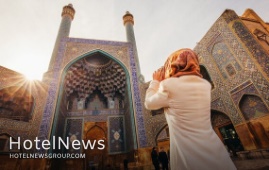
The Iranian tourism industry has suffered $233m losses due to COVID restrictions over the past two years. “Iranian tourism facilities have incurred a loss of 69 trillion rials ($233 million) due to the outbreak of the coronavirus over the past two years,” an official with the tourism ministry has said. It has been a major shock to the tourism industry when the coronavirus emerged in 2019, Rokna quoted Mohammad-Kazem Kholdi-Nasab as saying on Monday. Citing an example, the official said, nearly all pre-scheduled trips were canceled during the new Iranian year holidays in March 2020 except for those that were necessary. “Travel is not believed to be the cause of the outbreak, rather it is a lack of adherence to health protocols that have caused the outbreak, but people canceled their trips anyway, causing major damage to the tourist facilities across the country,” he explained. With only two months until the upcoming new Iranian year holidays, the tourism ministry is preparing safe and smart travel packages for Iranian holidaymakers and travelers, he noted. Nearly 70 percent of the population has been vaccinated, so these trips may be able to partially compensate for the damage done to tourism facilities over the past two years, he mentioned. Last year the tourism ministry announced that the tourism of the country was growing before the corona outbreak, its revenues reached $11.7 billion in 2019, which accounted for 2.8% of GDP, nearing the average share of tourism in the world GDP, which was 3.2 percent. Iran was ranked as the second fastest-growing country in tourism based on data compiled by the World Tourism Organization. Experts expect Iran to achieve a tourism boom after coronavirus contained, believing its impact would be temporary and short-lived for a country that ranked the third fastest-growing tourism destination in 2019. The Islamic Republic expects to reap a bonanza from its numerous tourist spots such as bazaars, museums, mosques, bridges, bathhouses, madrasas, mausoleums, churches, towers, and mansions, of which 26 are inscribed on the UNESCO World Heritage list. Under the 2025 Tourism Vision Plan, Iran aims to increase the number of tourist arrivals from 4.8 million in 2014 to 20 million in 2025.
Create: Jan 8, 2022 Edit: Jan 8, 2022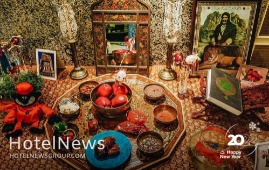
Iran pavilion is set to add extra charm to the prestigious Expo 2020 Dubai by widening its outline such as an enormous celebration of Noruz, the Persian New Year, which will begin on March 21. The decision was reached during a meeting between the Cultural Heritage, Tourism and Handicrafts Minister Ezatollah Zarghami, Culture and Islamic Guidance Minister Mohammad-Mehdi Esmaeili and Industry, Mining, and Trade Minister Reza Fatemi Amin, Mehr reported on Sunday. During the meeting, the financial support needed to implement the ideas for improving the condition of Iran’s pavilion during the remaining 100 days of the expo was also discussed. Noruz, which usually falls on March 21st every year, marks the beginning of spring across a vast geographical area. The feast was initially registered on the UNESCO List of the Intangible Cultural Heritage of Humanity in 2009, as a common tradition for Iran, Azerbaijan, India, Kyrgyzstan, Pakistan, Turkey, and Uzbekistan. However, the five other countries put in requests officially to be added to the list during a meeting held in Tehran in January 2014. In December 2016, Iran and 11 other countries registered Noruz as a common tradition during the 11th session of the Intergovernmental Committee for the Safeguarding of the Intangible Cultural Heritage, held in Addis Ababa, Ethiopia. Noruz, according to UNESCO, promotes the values of peace and solidarity between generations and within families, as well as reconciliation and neighborliness, thus contributing to cultural diversity and friendship among peoples and various communities. Noruz traditions, however, vary from place to place, ranging from leaping over fires and streams in Iran to tightrope walking, lighting candles at house doors, traditional games such as horse racing, or the traditional wrestling practiced in Kyrgyzstan.
Create: Jan 3, 2022 Edit: Jan 3, 2022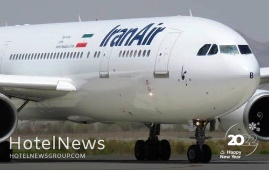
Pakistan International Airlines (PIA) has resumed direct flights to Iran’s Mashhad, after a five-year gap to develop people-to-people contacts, local media reported on Thursday. The development took place following the serious efforts of the Iranian Embassy in Islamabad to facilitate air travel between the two neighboring countries and to boost the tourism industry. Earlier this month, Chief Executive of PIA Air Marshal Arshad Malik during a meeting with Ambassador of Iran to Pakistan Mohammad Ali Hosseini had announced that the PIA is going to start direct flights from Lahore to Mashhad, Asian News International reported. Ambassador Hosseini in a tweet had also revealed that Iran and Pakistan had agreed on increasing efforts to promote air cooperation between Iran and Pakistan. In this regard, PIA is going to begin direct flights from Karachi to Mashhad on Jan 1, 2022. Iran Air operates one weekly flight from Tehran to Karachi and vice versa, and there are reports that Mahan Iran Airlines will resume flights from Tehran and Mashhad to Lahore. Mashhad is Iran’s holiest and second-largest city. Its raison d’être is the striking shrine complex of the eighth Shia Imam (AS) that is encircled by dozens of five-star hotels and many other accommodation centers.
Create: Jan 1, 2022 Edit: Jan 1, 2022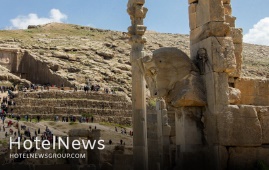
Authorities of Persepolis have launched an unmanned aerial vehicle (UAV) documentation project to help study and analyze the neighboring lands and properties, which encircle the UNESCO World Heritage site in southern Iran. “A documentation project has been commenced on the closest boundaries of Persepolis to gather needed information to monitor possible changes and interventions in this area,” said Hamid Fadaei, the director of the World Heritage site. The first purpose of this documentary is to prepare a cadastral map of agricultural lands in the first-grade boundaries of Persepolis, and the second purpose is to record the current status of historical monuments, including historical sites and hills that are dotted in that area, Fadaei explained. “In that regard, we operate close-range photogrammetry and UAV in the documentation of architecture monuments…..And the project is expected to become to an end by the yearend (March 20, 2022),” the official noted. Persepolis, also known as Takht-e Jamshid, whose magnificent ruins rest at the foot of Kuh-e Rahmat (Mountain of Mercy) is situated 60 kilometers northeast of the city of Shiraz in Fars province. It was the seat of the government of the Achaemenid Empire, though it was designed primarily to be a showplace and spectacular center for the receptions and festivals of the kings and their empire. Persepolis ranks among the archaeological sites which have no equivalent, considering its unique architecture, urban planning, construction technology, and art. This 13-ha ensemble of majestic approaches, monumental stairways, throne rooms (Apadana), reception rooms, and dependencies is classified among the world’s greatest archaeological sites. The city’s immense terrace was begun about 518 BC by Darius the Great, the Achaemenid Empire’s king. On this terrace, successive kings erected a series of architecturally stunning palatial buildings, among them the massive Apadana palace and the Throne Hall (“Hundred-Column Hall”). According to Britannica, the stone was cut with the utmost precision into blocks of great size, which were laid without mortar; many of them are still in place. Especially striking are the huge columns, 13 of which still stand in the audience hall of Darius I (the Great; reigned 522–486 BC), known as the Apadana, the name given to a similar hall built by Darius at Susa. There are two more columns still standing in the entrance hall of the Gate of Xerxes, and a third has been assembled there from its broken pieces. Narratives say that Persepolis was burnt by Alexander the Great in 330 BC apparently as revenge to the Persians because it seems the Persian King Xerxes had burnt the Greek City of Athens around 150 years earlier.
Create: Dec 29, 2021 Edit: Dec 29, 2021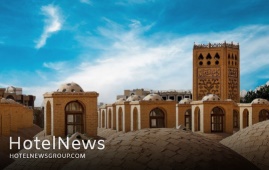
New legal boundaries have been defined for five historical properties, which are scattered across Yazd province. The Ministry of Cultural Heritage, Tourism, and Handicrafts has announced the exact legal boundaries of the properties in separate letters to the governor-general of the central province, IRIB reported on Tuesday. In addition to protecting historical sites, the demarcation projects are aimed to prevent further destruction and damage. Esfahanian Garden House, Eqbal Factory, Vazir Castle, Ezzatabad Castle, and Ezzatabad Kushk (small garden pavilion) are those demarcated recently. In July 2017, the historical structure of the city of Yazd was named a UNESCO World Heritage. Wedged between the northern Dasht-e Kavir and the southern Dasht-e Lut on a flat plain, the oasis city enjoys a very harmonious public-religious architecture that dates from different eras. Yazd is usually referred to as a delightful place to stay, or a “don't miss” destination by almost all of its visitors. The city is full of mudbrick houses that are equipped with innovative badgirs (wind catchers), atmospheric alleyways, and many Islamic and Iranian monuments that shape its eye-catching city landscape. It is a living testimony to the intelligent use of limited available resources in the desert for survival. Water is brought to the city by the qanat system. Each district of the city is built on a qanat and has a communal center. The use of earth in buildings includes walls and roofs by the construction of vaults and domes. Houses are built with courtyards below ground level, serving underground areas. Wind-catchers, courtyards, and thick earthen walls create a pleasant microclimate. Partially covered alleyways together with streets, public squares and courtyards contribute to a pleasant urban quality. The city escaped the modernization trends that destroyed many traditional earthen cities.
Create: Dec 29, 2021 Edit: Dec 29, 2021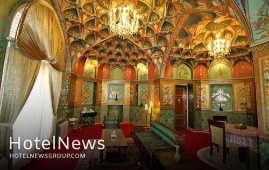
The occupancy rate of hotels in Iran has reached 45 percent, the head of the Iranian Hoteliers Association has announced. Following the planned measures, the occupancy rate of the country's hotels, which had fallen below five percent because of the outbreak of the coronavirus, has reached 45 percent over the past three months, IRNA quoted Jamshid Hamzehzadeh as saying on Sunday. Multiple problems, notably the pandemic, caused a severe impact on the tourism industry, the official explained. Even before the coronavirus outbreak and in 2019, travel was reduced due to heavy rains and flooding across the country, and the hotel industry had to recoup nearly 100 percent of the costs paid for canceled hotel reservations, he added. The Iranian hoteliers have lost 220 trillion rials (about $740 million) over the past two years, he noted. However, some problems have been resolved and the hotels’ condition has improved, he mentioned. Back in October, the official announced that Iranian hotels are ready to receive foreign tourists as the issuance of tourist visas and the flow of foreign tourists from land and air borders would be resumed. Ninety percent of the hotel staff have been vaccinated against the coronavirus, so the hotels are ready to welcome foreign tourists, observing strict health protocols, he said. The main destinations of foreign tourists in Iran are specifically cities such as Mashhad, Qom, Tabriz, Shiraz, Yazd, and Isfahan, and to return to the figure of over eight million incoming tourists before the outbreak of the coronavirus, serious planning is required, the official added. Iraqi tourists will flood the country once the borders open, but attracting tourists from Europe will require some time, he noted. However, he noted that two-thirds of the hotel staff have lost their jobs, he added. Back in September, Hamzehzadeh announced that all employees of accommodation centers across Iran are scheduled to be vaccinated against the coronavirus. “To vaccinate staffs of all accommodation centers, including eco-lodges, apartment hotels, and guest houses, as well as hotels, more coordination with the Ministry of Health is needed,” he added. Back in July, ISNA reported that the tourism industry of the country has suffered a loss of some 320 trillion rials ($1.1 billion) since the outbreak of the coronavirus pandemic. The pandemic has also ruined more than 44,000 jobs in a once budding travel sector of the country, the report added. Experts believe accommodation centers suffered the most as a result of the outbreak of the coronavirus in Iran and its subsequent unemployment and financial losses. Months of steep recession has taken its toll. Many travel insiders, hoteliers, and tour operators have faced big dilemmas such as bankruptcy, unemployment, debts, and the prospects of not being competitive on the international level. Panels of travel experts have mapped out new marketing strategies hoping Iran’s tourism would get back on its feet once again. For instance, the Head of the Iranian Tour Operators Association has said the international tourist flow to Iran will return to normal until 2022. Iran is potentially a booming destination for travelers seeking cultural attractions, breathtaking sceneries, and numerous UNESCO-registered sites. Under the 2025 Tourism Vision Plan, Iran aims to increase the number of tourist arrivals from 4.8 million in 2014 to 20 million in 2025.
Create: Dec 28, 2021 Edit: Dec 28, 2021
A team of archaeologists from Iran and Germany has carried out a field survey in Uramanat, an ancient rural region in western Iran, which earlier this year was named a UNESCO World Heritage. The survey was intended to shed new light on the history of Uramanat by unearthing remnants of historical monuments and relics, ISNA quoted the director of the World Heritage site as saying on Tuesday. It yielded the discovery of “several” archaeological sites and objects yet it resulted in a change in the chronological sequence of several previously-found ancient sites, Pouya Talebnia added. Moreover, several historical fortresses and their legal properties were demarcated during the survey, which was co-directed by Talebnia and Shelir Amelirad from Heidelberg University, the report said. Carried out during December and November, the survey also contributed to the enrichment of the “pottery bank” of Uramanat, Talebnia said. Stretched on the slopes of Sarvabad county, and shared between the provinces of Kordestan and Kermanshah, the rural area embraces dense and step-like rows of houses in a way that the roof of each house forms the yard of the upper one, a feature that adds to its charm and attractiveness. Last September, Hessam Mahdi, the representative of the International Council on Monuments and Sites (ICOMOS) said that he was “impressed” by the status of the rural landscape during his visit. He made the remarks on the sidelines of a visit to the western province of Kermanshah. “I am proud of being chosen to assess the case and traveling to Iran as I could visit the local people in the region.” Local officials and travel insiders believe that inscription of the property on the prestigious list of the UN body could jumpstart tourism in the region and also look at it as a tool for better conservation of its natural landscapes and unique cultural scenes for the next generations, saying its unique rural texture, architecture, lifestyle, and agriculture is a prominent example of the integration of man into nature. The Islamic Republic expects to reap a bonanza from its numerous tourist spots such as bazaars, museums, mosques, bridges, bathhouses, madrasas, mausoleums, churches, towers, and mansions, of which 26 are inscribed on the UNESCO World Heritage list. Under the 2025 Tourism Vision Plan, Iran aims to increase the number of tourist arrivals from 4.8 million in 2014 to 20 million in 2025. The latest available data show eight million tourists visited the Islamic Republic during the first ten months of the past Iranian calendar year (ended March 20).
Create: Dec 22, 2021 Edit: Dec 22, 2021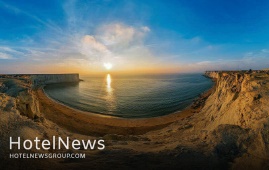
he development of Sistan-Baluchestan through tourism can help the region address its challenges, the deputy tourism chief of the southeastern province has announced. Through the development of tourism, a peace project can be pursued with the neighboring countries in the region, CHTN quoted Mojtaba Mirhosseini as saying on Tuesday. To date, tourism activists in the province have focused on activities for the sustainable development of tourism, which is highly commendable, the official added. The port of Chabahar has the potential to become the maritime tourism capital of Iran, and also the northern region of the province has the potential to become the historical tourism capital of the country, which with the right planning and building of necessary infrastructure, can be achieved, he noted. In order to increase the demand for visiting the province, its attractions and beauty need to be presented as much as possible, he explained. SEO and web marketing are among the most effective digital marketing tools in tourism and can help introduce more people to the province and local businesses, he mentioned. He also noted that organizing fam tours for Iranian tourism activists and media people significantly changed people’s perceptions of the region. Last year, former Cultural Heritage, Tourism, and Handicrafts Minister Ali-Asghar Mounesan said that the development of the travel industry across Sistan-Baluchestan province is among the top priorities for the ministry. “I am interested in Sistan-Baluchestan, and the development of this province is a priority for this ministry and the government,” the former minister stated. “The majority of my travels during my tenure has been to Sistan-Baluchestan, which I consider as a safe province with significant values in terms of culture, history, handicrafts, and tourism.” The collective province -- Sistan in the north and Baluchestan in the south -- accounts for one of the driest regions of Iran with a slight increase in rainfall from east to west, and an obvious rise in humidity in the coastal regions. In ancient times, the region was a crossword of the Indus Valley and the Babylonian civilizations. The province possesses special significance because of being located in a strategic and transit location, especially Chabahar which is the only ocean port in Iran and the best and easiest access route of the middle Asian countries to free waters. The vast province is home to several distinctive archaeological sites and natural attractions, including two UNESCO World Heritage sites, namely Shahr-e-Soukhteh (Burnt City) and Lut desert.
Create: Dec 22, 2021 Edit: Dec 22, 2021
The exchange of tourists between Iran and its neighbors is expected to increase in the months to come, Iran’s deputy tourism minister Ali-Asghar Shalbafian has announced. The official made the remarks during a meeting with Hamad Obaidalla the Chief Commercial Officer of Fly Dubai Airlines on Monday. Increasing tourist exchanges with neighboring countries is on the agenda for Iran following the expansion of the flight network between Iran and the United Arab Emirates, he said. To achieve this goal, the private and public sectors will consolidate their capacities, the official added. For his part, Obaidalla said that currently, Fly Dubai Airlines operates 30 flights a week to Iran, and this capacity will grow to nearly 50 flights in the future. By relying on this capability, tourists can be directed to Iranian tourist destinations effectively, he added. Communication between the private sector of the two countries plays a crucial role in achieving executive strategies, he noted. Back in September, Cultural Heritage, Tourism, and Handicrafts Minister Ezzatollah Zarghami announced the issuance of tourist visas and the flow of foreign tourists to Iran would resume as per President Ebrahim Raisi’s order following 19 months of suspension. Currently, tourist visas are once again being issued to cultivate good grounds of hope for travel insiders. However, months of steep recession have taken its toll. Many travel insiders, hoteliers, and tour operators have faced big dilemmas such as bankruptcy, unemployment, debts, and the prospects of not being competitive on the international level. Only months into the outbreak, Zarghami’s predecessor, Ali-Asghar Mounesan, lamented that the number of foreign travelers to Iran was drastically plunged due to the pandemic. “Tourism of the country was growing before the corona [outbreak], its revenues reached $11.7 billion in 2019, which accounted for 2.8% of GDP, nearing the average share of tourism in the world GDP, which was 3.2 percent,” Mounesan said. He added 8.7 million foreign nationals visited Iran during the [Iranian] year (1398), adding that Iran was ranked as the second fastest-growing country in tourism based on data compiled by the World Tourism Organization. The average of international travels to and from Iran fell by 80 percent during the past Iranian calendar year 1399 (ended on March 20, 2021) from a year earlier caused by various coronavirus restrictions. Optimistic forecasts, expect the country would achieve a tourism boom after coronavirus is contained, believing its impact would be temporary and short-lived for a country that ranked the third fastest-growing tourism destination in 2019. UNWTO’s Panel of Experts foresees a rebound in international tourism in the current year, mostly in the third quarter. However, some experts suggest the rebound could occur only in 2022. The Islamic Republic expects to reap a bonanza from its numerous tourist spots such as bazaars, museums, mosques, bridges, bathhouses, madrasas, mausoleums, churches, towers, and mansions, of which 26 are inscribed on the UNESCO World Heritage list. Under the 2025 Tourism Vision Plan, Iran aims to increase the number of tourist arrivals from 4.8 million in 2014 to 20 million in 2025.
Create: Dec 20, 2021 Edit: Dec 22, 2021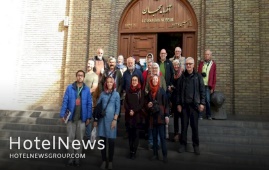
The northwestern Iranian province of East Azarbaijan plans to host a delegation of Turkish journalists and media personnel for a familiarization tour across the province in the near future, the provincial tourism chief has announced. A fam tour introducing East Azarbaijan’s tourism capabilities will be organized in cooperation with the private sector during the winter for Turkish media representatives and tourism activists, Ahmad Hamzezadeh said on Monday. A suitable platform can be provided for the development of the tourism industry by having fam tours in the province and taking advantage of the existing capacities in the sector, he explained. Holding fam tours is the best strategy for developing tourism in top countries, the official added. To accomplish this goal, the province’s tourism department is planning to organize fam tours for tourism activists and media members of the other neighboring countries early next year, he noted. Soaked in history and culture for millennia, Tabriz, which is the capital of East Azarbaijan, embraces several historical and religious sites, including the Jameh Mosque of Tabriz and Arg of Tabriz, and UNESCO-registered Tabriz Historic Bazaar Complex to name a few. The city became the capital of the Mongol Il-Khan Mahmud Gazan (1295–1304) and his successor. Timur (Tamerlane), a Turkic conqueror, took it in 1392. Some decades later the Kara Koyunlu Turkmen made it their capital, it was when the famous Blue Mosque was built in Tabriz. The city retained its administrative status under the Safavid dynasty until 1548 when Shah Tahmasp I relocated his capital westward to Qazvin. During the next two centuries, Tabriz changed hands several times between Persia and Ottoman Empire. During World War I, the city was temporarily occupied by Turkish and then Soviet troops. The ancient city was declared a world craft city of carpet weaving by the World Craft in 2016. It also bore the title of 2018 Islamic Tourism Capital.
Create: Dec 14, 2021 Edit: Dec 14, 2021